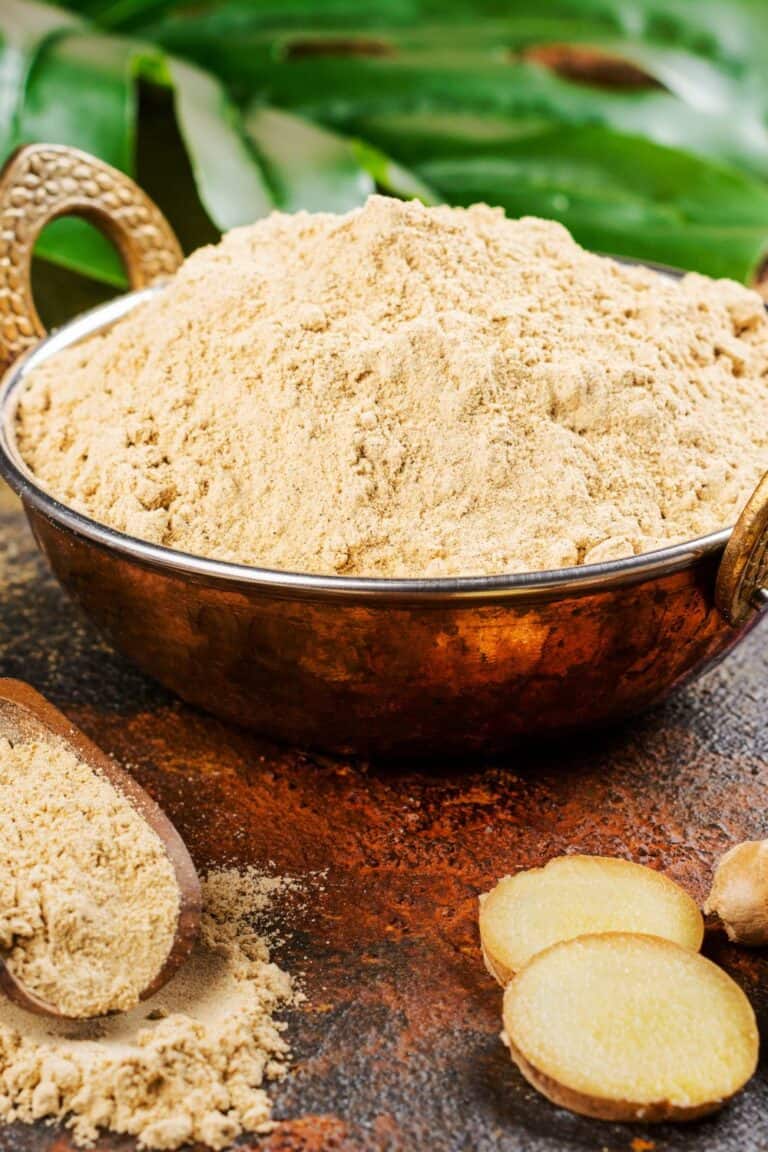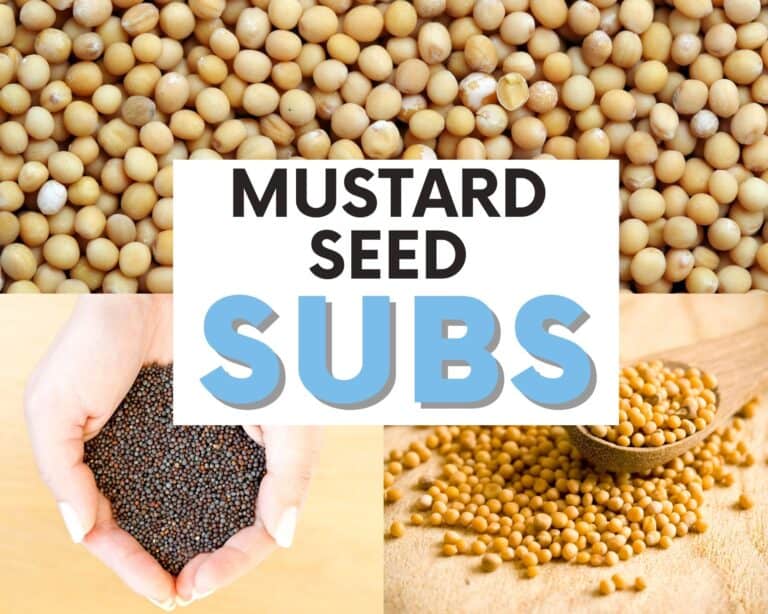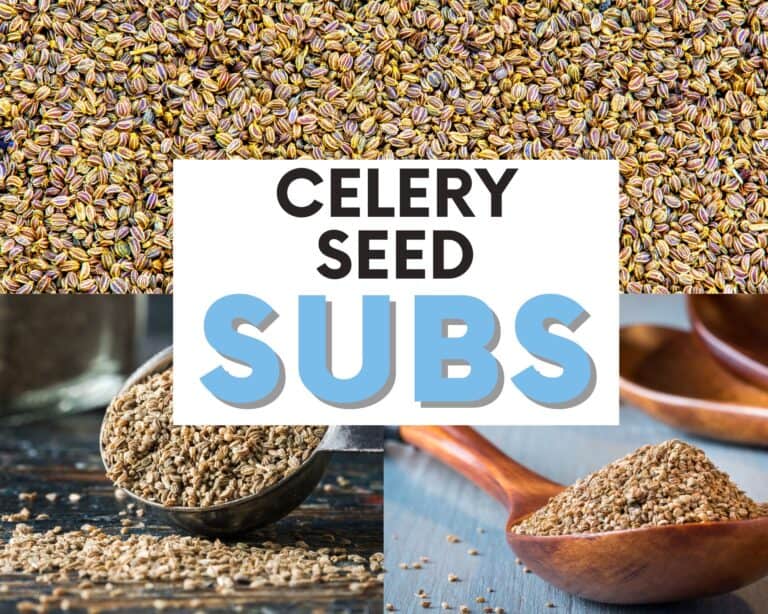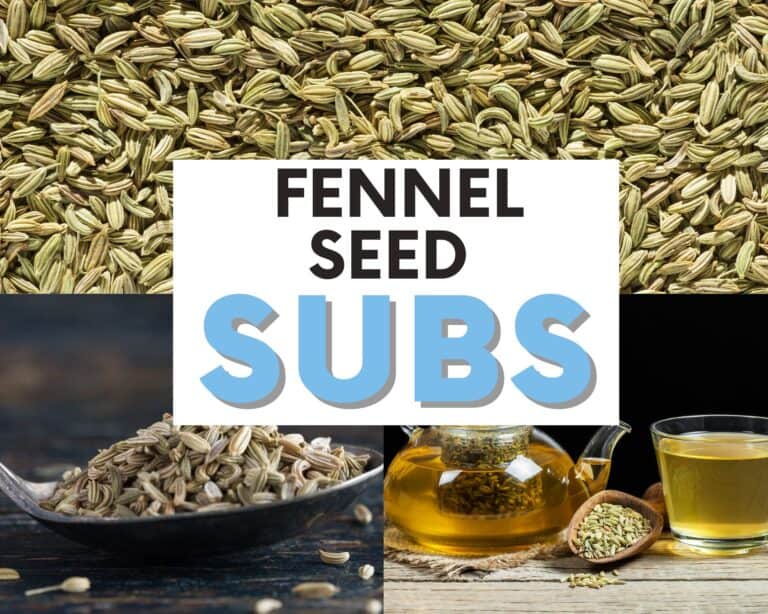6 Allspice Substitutes That Will Blow Your Mind
This post may contain affiliate links. Please see my disclosure policy for details.
Imagine you’re excited to try a new recipe that calls for allspice, but you suddenly realize you don’t have any on hand. Or perhaps you’ve been eager to cook that mouthwatering Jamaican dish, only to find that your ground allspice has lost its aroma.
Fear not, my friend! You can still achieve a similar taste and flavor by using readily available allspice substitutes.
Allspice is not something we use in our daily cooking. Besides, as it loses its fragrance quite quickly, you may want to avoid buying a whole jar for one recipe. Instead, you can use some common spices to replicate the aroma and flavor of your dish.
The name allspice can be a little confusing. Although it sounds like a blend of various spices, it is a single spice made from a type of dried berry.
This spice has a complex mix of sweet, warm, and earthy tastes. Allspice is used in both sweet and savory dishes.
Here, we have made a list of four substitutes for allspice. You can use these common alternatives in your recipe without losing much in taste or flavor.
What is Allspice?
Allspice, as the name suggests, is a versatile spice that can easily remind you of a mix of cinnamon, nutmeg, and cloves.
The flavor is warm, sweet, and slightly peppery, making it a delightful addition to both sweet and savory dishes. Its texture is that of a small, round, brown berry, while its aroma is a delightful blend of those spices I mentioned earlier.

Now, let’s talk about where this marvelous spice comes from. Allspice is primarily grown in Jamaica, Mexico, and Central America.
The name “allspice” was coined by the English who were fascinated by the fact that it seemed to capture the essence of many different spices in one.
In the culinary world, allspice is used in various ways, with some cuisines favoring it more than others.
For instance, Caribbean and Middle Eastern cuisines often use allspice to add depth and warmth to their dishes. It’s also a popular spice in traditional British cooking, especially around the holidays.
As for whether it’s best to use whole or ground allspice, it depends on the dish you’re making.
Whole allspice berries are perfect for infusing flavor into liquids like soups, stews, and mulled wine, whereas ground allspice is more suitable when you want the spice to be evenly distributed throughout the dish.
Substitutes for Allspice

1. A Mix of Cinnamon, Nutmeg, and Clove
While you might not have allspice in your pantry, the chances are you might already have these three common spices, which include cinnamon, nutmeg, and clove.
The ratio for cinnamon, nutmeg, and clove should be 2:1:1.
So if your recipe asks for two teaspoons of ground allspice, mix one teaspoon of cinnamon, half a teaspoon of clove, and half a teaspoon of nutmeg.
This mix will add a similar warm flavor to your dish that allspice provides. If you find you have run out of either clove or cinnamon, you can still make it.
Mix ¾ portion of cinnamon with ¼ portion of clove or ¼ portion of nutmeg. The result will be close enough to replicate the aroma and taste.

However, the peppery kick of allspice is missing in this spice blend. So, if you want to use it in savory dishes, add a pinch of finely ground black pepper to get the peppery taste.
This mix works best for sweet dishes like pies, cookies, and cakes, as well as savory dishes such as stews, soups, and marinades.
Keep in mind that the flavors may vary slightly, but this homemade blend will still bring that delightful warmth and depth to your dish that Allspice is known for.
2. Chinese Five-Spice Mix
I bet you didn’t think of the Chinese five-spice mix! It has a strong flavor and tastes closer to allspice. This mix is an essential ingredient in many Chinese dishes and is also used in Hawaiian and Vietnamese recipes.
It contains five different herbs, including cinnamon, cloves, star anise, fennel, and ginger. Sometimes, the ginger in the five spices is replaced with Szechuan peppercorn.
You can use Chinese five-spice in sweet as well as savory dishes. The spicy-sweet flavor of the Chinese five-spice is stronger than that of the allspice.
Still, it does the work fairly well. To substitute allspice, use an equal amount of five-spice as indicated in the recipe or a little less.
3. Pumpkin Spice Mix
Like the Chinese five-spice, pumpkin spice is also a combination of different warm spices. The standard components of pumpkin spice include cinnamon, nutmeg, ginger, clove, and allspice.
So, even if you do not have allspice, you can still make pumpkin spice. To make this mix, you should add one teaspoon ground cinnamon, ¼ teaspoon ground ginger, ⅛ teaspoon ground cloves, and ¼ teaspoon ground nutmeg.
If your recipe asks you to add one teaspoon of allspice, substitute it with an equal amount of pumpkin spice mix. This mixture adds a complex flavor to the dish. This blend works very well for sweet dishes.
4. British Mixed Spices
Like pumpkin spice, this spice blend also has allspice in it. If you have British mixed spice in your pantry, you can use this mix to replace allspice in a recipe.
This British spice mix includes a balanced proportion of cinnamon, nutmeg, coriander, cloves, ginger, mace, caraway, and allspice.
The warm and spicy-sweet taste of British mixed spice can effectively substitute the flavor of allspice. Therefore, for each teaspoon of allspice, add an equal amount of British spice mix.
The rule is that ½ teaspoon of ground allspice substitutes the flavor of 6 whole allspices. You can adjust the amount for other spice blends accordingly.
5. Apple Pie Spice Blend
Both apple pie spice and allspice bring warmth, depth, and complexity to dishes. They both contain cinnamon and nutmeg, which give them their sweet and aromatic qualities. These spices are often used in desserts, baked goods, and some savory dishes, making them versatile options in the kitchen.
Apple pie spice is a pre-blended mix like the other ones I have mentioned above. It includes cinnamon, nutmeg, and sometimes allspice itself. However, apple pie spice tends to be sweeter due to the higher proportion of cinnamon and may lack the subtle spiciness that allspice imparts.
I have successfully used apple pie spice as a substitute for allspice in various recipes, such as cakes, cookies, and even savory stews. To get the right flavor, I carefully adjusted the quantity of apple pie spice according to the specific dish I was preparing.
In most cases, I found that using a 1:1 ratio worked well, but occasionally, I had to increase or decrease the amount to get that right taste.
6. Garam Masala

Garam masala is a blend of various spices commonly including cinnamon, cloves, cardamom, black pepper, and nutmeg. The specific blend may vary depending on the region, brand, or family recipe.
Its flavor profile is more complex and robust than allspice, with an added warmth and depth from the black pepper and cardamom.
When substituting garam masala for allspice, keep in mind that the flavor profile will be more complex and bold. To begin, use half the amount of garam masala as the recipe calls for allspice.
For example, if the recipe requires 1 teaspoon of allspice, start with 1/2 teaspoon of garam masala. Taste your dish and adjust the quantity according to your preference.
However, garam masala may not be the best substitute in recipes where a sweeter, milder flavor is desired, such as in desserts, baked goods, or certain fruit-based dishes.
My Final Thoughts on Allspice Substitutes
In the end, discovering good allspice substitutes isn’t too tricky. Several alternatives can emulate the warm, sweet, and mildly spicy characteristics of allspice, each with its own unique flavor profile and specific advantages and disadvantages.
Here’s a bullet point list of each substitute along with one pro and con for using it to replace allspice:
- Homemade Allspice Blend (cinnamon, cloves, and nutmeg):
- Pro: Closely mimics the flavors of allspice
- Con: Requires three separate spices to create the blend
- Cinnamon and Cloves:
- Pro: Easily accessible and commonly found in most kitchens
- Con: Lacks the nutmeg component present in allspice
- Pumpkin Pie Spice:
- Pro: Readily available pre-made blend
- Con: Ginger presence may alter the overall flavor profile
- Apple Pie Spice:
- Pro: Sweeter flavor profile suitable for desserts
- Con: May not be ideal for savory dishes requiring allspice
- Chinese Five-Spice Powder:
- Pro: Offers a unique, complex flavor profile
- Con: The strong star anise and Sichuan pepper flavors may not suit all recipes
- Garam Masala:
- Pro: Adds warmth and depth to savory dishes
- Con: Not suitable for recipes where a sweeter, milder flavor is desired
By understanding the pros and cons of each substitute, home cooks and chefs alike can make the best decisions when selecting the most appropriate alternative for their recipe.
I hope you found this helpful and like always, Happy Cooking!






